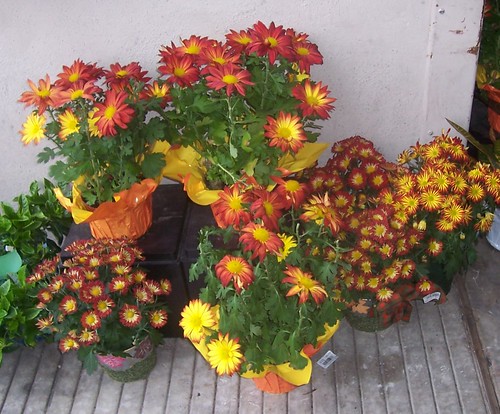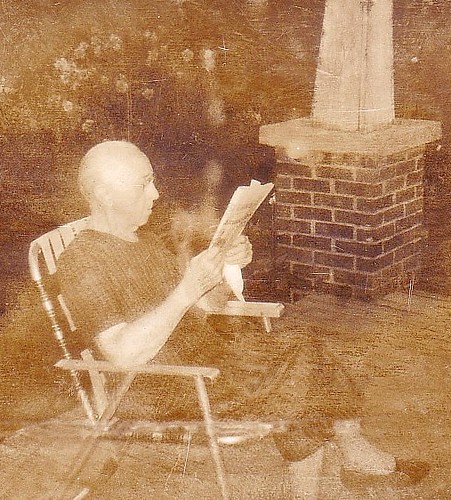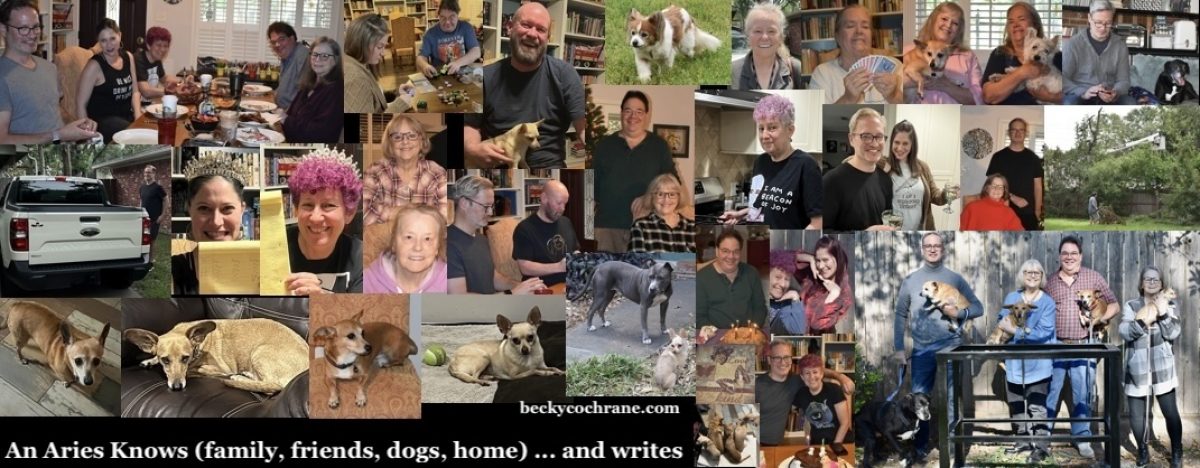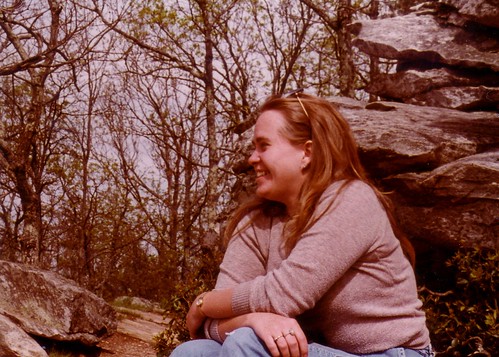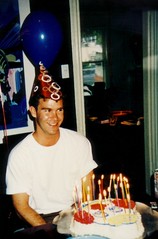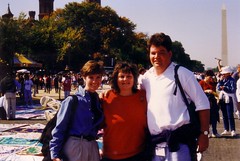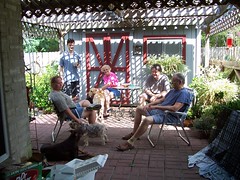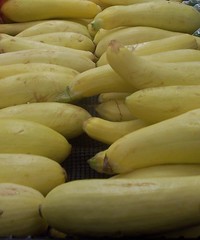
Last night Jim and I were talking about crazy grandmothers. It seems nearly everyone has a crazy grandmother story. I didn’t know either of my biological grandmothers–they died before I was born. However, my father’s father did have the good sense to remarry, so I had a step-grandmother. I adored her, and certain scents always make me think of her. I had actually been remembering her the other night as I was slicing fresh okra and enjoying its smell. To keep me out from under her feet when she was cooking, she’d give me a big metal bowl full of the ends and peelings of her vegetables and sit me on the back porch outside her kitchen. I would pretend-cook okra, squash, carrots, and potatoes while she cooked the real thing.
Her name was Mary Jane, and among other things, she’d been a postmistress in their little Alabama town. She’d had a breast removed because of cancer, but I never knew her to be sick or to complain about anything. My brother, sister, and I called her Jane-Jane. When my brother was little, he misheard a church hymn with the lyric, “hold to God’s unchanging hand” as “hold to God and Jane-Jane’s hand.” To all of us, that was perfectly logical, so we always sang his version.
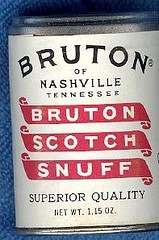
Jane-Jane’s thinning white hair was always pulled back in a tiny bun at the nape of her neck, and no matter how hot the Alabama summer, she was always in a dress with all the proper undergarments and her thick support hose. She managed to be every bit a lady even when she dipped Bruton snuff (a brand I misspelled in A COVENTRY CHRISTMAS and another of those scents I associate with her). One of my mother’s most “mortified” memories is when Jane-Jane went with us to the laundromat one morning. I was around two, and letters had begun to fascinate me, so I would always call them out and ask, “What’s that say, Mama?” Apparently, I found some new ones scratched onto a washing machine, because I began spelling out, “F…U…C…K…. What’s that say, Mama?” Fortunately, like all ladies, Jane-Jane could be conveniently deaf.
Jane-Jane drove a car that looked a little like this:
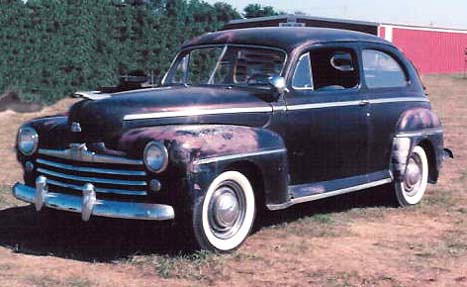
That car always smelled like gasoline, and so did the outlying garage where she parked it. I loved to sit in the car and pretend-drive, though I may have just been addicted to the gasoline high. My mother hadn’t learned to drive back then, so when my father was away, Jane-Jane was always our chauffeur. I remember one day when coming home from church, I heard my mother’s sharp intake of breath as Jane-Jane drove past a man on a bicycle.
“Miss Mary Jane, I believe you brushed his pants legs with your car,” my mother said a little tensely, but again, Jane-Jane became conveniently deaf and never acknowledged that she heard her, any more than she acknowledged that she shared the road with anyone else.
Jane-Jane had transformed the entire front yard of my grandfather’s house into an unruly flower garden. No sweet flowers for her, she liked the ones that gave off more acrid, pungent odors, and I still like those best, too, and they always evoke her memory when I smell them: black-eyed Susans, marigolds, daisies, sunflowers, chrysanthemums, zinnias, and four o’clocks.
I thought of her today at the grocery store when I saw these flowers. I was much too young when she died to have been able to tell her what she meant to me. I hope she knew I loved her.
‘Cause a little girl inside me will always be holding to Jane-Jane’s hand.
